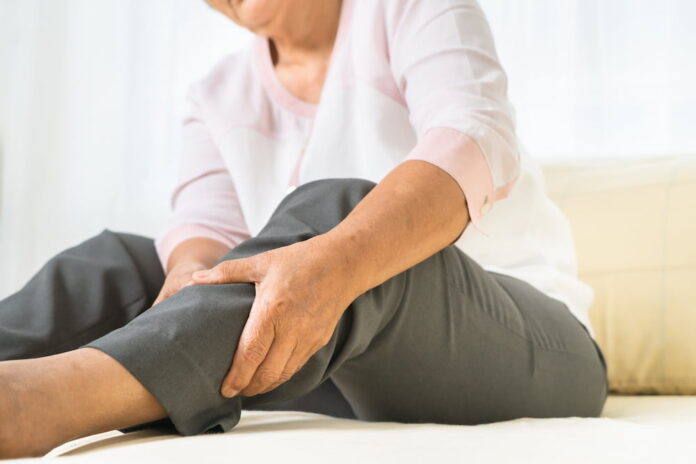Venous disease is common, but many people are unaware of the early signs and symptoms. Early detection is key to successful treatment and preventing the disease from progressing. Knowing what to look for can help you identify the disease before it becomes a bigger problem. This article provides an overview of the early signs of venous disease. With the correct information, you can take steps to protect your health and well-being.
Venous disease
Venous disease is a disorder that causes damage or blockages in the veins. Slow blood flow in the veins is the most typical reason. It is often caused by defective valves that prevent the proper flow of blood back to the heart. These diseases can be painful and debilitating.
Vein doctor in Queens is the best doctor to consult if you have venous problems. It is essential to know the early warning signs of venous disease. With the correct information, it is possible to prevent venous disease before it becomes a more severe problem.
Causes
Venous disease can affect anyone. However, some factors increase the risk, including:
– Genetics: If someone in your family has had a venous disease, you’re more likely to develop it.
– Age: As we age, the valves in the veins may weaken and not function properly.
– Sedentary lifestyle: Spending prolonged periods sitting or standing can increase pressure in the veins.
– Overweight or obese: Excess weight can increase pressure in the veins and contribute to venous disease.
– Pregnancy: Pregnancy can increase pressure in the veins, especially in the legs.
– Trauma: Injury to the legs can increase the risk of venous disease.
Early warning signs of venous disease
As with all diseases, knowing the early warning signs is vital. If you experience any of the symptoms listed below, you should consult a vein specialist for an examination.
– Persistent leg pain: It often occurs as a result of long periods of standing or sitting. Although leg pain is a common symptom of venous disease, it can also be caused by many other conditions.
– Swelling, heaviness, or cramping in the legs: These are usually due to a buildup of blood in the veins of the legs. It may be a sign of varicose veins.
– Variations in skin texture or color: These alterations might be caused by blood accumulation in the leg veins.
– Varicose veins: These are dilated, twisted veins that can be easily seen. These veins cannot effectively return blood to the heart, which can cause swelling, pain, and fatigue in the legs. If left untreated, varicose veins can progress and cause serious complications, such as ulcers.
– Itchy or itchy legs: It may be caused by chronic venous insufficiency or an allergic reaction.
– Changes in the size of the legs: They may indicate chronic venous insufficiency or deep vein thrombosis (DVT).
– Pain or warmth in one leg: This may be due to the formation of a blood clot in the veins.
It is important to see a vein specialist if you have any of these symptoms. Venous disease affects your quality of life and can be dangerous if not treated properly.
Types of venous disease
There are several types of venous disease, some of which include:
– Varicose veins: Varicose veins are twisted, dilated veins near the surface of the skin. Varicose veins are a common condition that can affect people of all ages. They usually occur in the legs.
– Spider veins: These are small red veins that look like a spider’s web. They usually appear on the calves or ankles. Spider veins are generally benign but can sometimes signify varicose veins.
– Chronic venous insufficiency (CVI): It occurs when veins cannot pump blood back to the heart effectively and become engorged with blood. CVI can cause swelling, pain, and skin problems.
– Deep vein thrombosis (DVT): It is caused by forming a blood clot in a deep vein in the leg.
– Venous ulcers: These are sores that form in the skin due to chronic venous insufficiency.
– Phlebitis: It is an inflammation of the vein.
Conclusion
Venous disease is a common medical condition and can affect people of all ages. If you experience any of the symptoms of venous disease, you must see a vein specialist as soon as possible. Early detection is critical to successful treatment and can prevent disease progression.
Read Also
- Understanding the Importance of Routine Health Screenings for SeniorsDid you know that the global routine health screening market is expected to reach $105.93 billion by 2033? This highlights the rising focus on preventive healthcare. As we age, our bodies go through many changes. Staying proactive about health becomes more important with time. Routine health screenings for seniors play a vital role in maintaining… Read more: Understanding the Importance of Routine Health Screenings for Seniors
- Why Modern Retirement Facilities Are Vital for Chronic Disease CareToday’s retirement feels different from the past. Modern communities are bright, active, and full of life. They give seniors comfort while also providing the care needed for health and safety. For those living with long-term conditions like diabetes or heart disease, these places bring both support and peace of mind. Here, life doesn’t slow down-it… Read more: Why Modern Retirement Facilities Are Vital for Chronic Disease Care
- Understanding Breast Cancer Risks and Signs in Older MenMany people associate breast cancer with women. But did you know that breast cancer risk in older men is a significant health concern? Although it is rare, men can develop this disease, especially in later years. Understanding the risks, symptoms, and necessary preventive actions can lead to earlier detection and treatment, ultimately improving survival rates.… Read more: Understanding Breast Cancer Risks and Signs in Older Men
- How to Choose the Perfect Eyewear for Your Face Shape and StyleEyewear has evolved far beyond a simple vision aid—today, it’s a bold statement of personality, professionalism, and fashion sense. Whether you’re selecting your first pair or updating your look, the right frames can enhance your features, elevate your confidence, and even influence first impressions. But with endless options available, how do you find the perfect… Read more: How to Choose the Perfect Eyewear for Your Face Shape and Style
- How to Choose the Right Senior Living Community for Your NeedsHow do you know which senior living community fits your needs best? Choosing the right place can feel tricky with so many options, from independent living to assisted care. It’s important to think about daily routines, medical support, social activities, and the kind of environment that feels safe and welcoming. You also want a place… Read more: How to Choose the Right Senior Living Community for Your Needs






